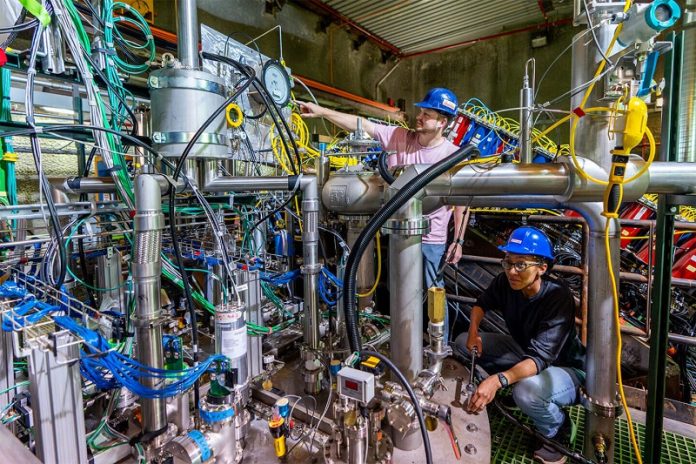
In a major advancement for the international Deep Underground Neutrino Experiment (DUNE), scientists have successfully detected the first neutrinos using a new prototype particle detector at the U.S. Department of Energy’s Fermi National Accelerator Laboratory (Fermilab).
This marks a significant milestone for DUNE, which is set to become the most comprehensive neutrino experiment in the world.
Neutrinos are tiny, nearly invisible particles that are crucial for understanding the universe. They are incredibly difficult to detect because they rarely interact with other matter.
DUNE’s mission is to study these elusive particles to answer some of the biggest questions in physics, such as the origins of matter and the processes behind supernovae and black holes.
At the heart of this breakthrough is a new technology called LArPix. Developed by a team of physicists and engineers at Lawrence Berkeley National Laboratory (Berkeley Lab), LArPix is an advanced sensor system that can capture and image neutrino events in three dimensions.
This technology was installed in a prototype detector at Fermilab earlier this year.
The DUNE project, currently under construction, will eventually involve a large-scale experiment with detectors located both at Fermilab near Chicago and at the Sanford Underground Research Facility (SURF) in South Dakota, about 800 miles away.
Neutrinos will be sent from Fermilab through the Earth’s crust to the detectors at SURF, where they will be studied in detail.
The recent success came when the DUNE team installed their latest prototype detector, called the 2×2 prototype, in the path of a neutrino beam at Fermilab.
This prototype is named for its design, which features four modules arranged in a square. On July 10, the team announced that they had successfully recorded their first neutrinos with this prototype.
Louise Suter, a scientist at Fermilab, described the achievement as a “momentous milestone” that demonstrates the potential of the new technology.
The prototype’s innovative design allows it to handle the unique challenges of neutrino detection, such as high-intensity environments and the need for precise 3D imaging.
The 2×2 prototype uses liquid-argon time projection chambers (LArTPCs) to record particle tracks. This system was thought to be nearly impossible to create for high-intensity environments, but the invention of LArPix made it possible.
With more than 337,000 individual charge-sensitive pixels, the prototype provides detailed images of neutrino interactions, allowing scientists to study these particles in unprecedented detail.
The success of the 2×2 prototype is just the beginning. The final DUNE detector will be much larger, with 35 liquid-argon modules. These modules will help detect the enormous flux of neutrinos expected at the Fermilab site.
The next steps involve testing the prototype further to ensure it meets the requirements for the final detector. Researchers will continue to bombard the 2×2 prototype with neutrinos to gather more data, which will be invaluable for the full-scale DUNE experiment.
This success is a significant step forward for the DUNE collaboration, which includes more than 1,400 scientists and engineers from over 200 research institutions worldwide. The prototype’s achievement has set the stage for even more discoveries in the field of neutrino research.
As DUNE moves forward, the data collected from these experiments will help scientists explore new areas of neutrino research and potentially solve some of the universe’s biggest mysteries. The journey has just begun, but the future looks incredibly promising for this groundbreaking experiment.



